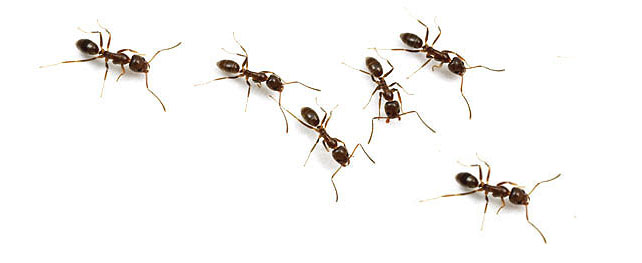What is a pest? Know your visitors from your vermin
Pests are generally considered to be any animal or plant that can potentially be harmful to humans, their food or their living conditions. This can include animals which:
- Carries disease-causing parasites
- Attack and eat crops and vegetables
- Damage food kept in storage either by eating or contaminating it
- Attack livestock or carry diseases that affect livestock
- Damage clothing and fabric for example moths or silverfish
- Cause damage to buildings and structures such as woodworm
- Bite or sting humans
It can be quite hard to identify pests. Something we might ordinarily consider a pest my not actually be so, whilst some of the creatures we are most fond of cause more damage than we think.
Here we identify what should be considered a pest, a nuisance or a surprisingly beneficial creature.
Are ants a pest?
Whilst ants are well known for their swarms and can invade buildings in search of food – they are more of a nuisance than a pest.
In fact, many ants feed on other insects and can protect plants such as aphids from damage caused by ladybirds and other feeding insects.
Some red ants can sting, but for most people, this causes no more than a minor irritation.
Are bees a pest?
Whilst bees can sting, they are generally very docile and rarely sting unprovoked, unlike wasps. Bees actually play a huge and underestimated role in helping maintain our ecosystem through the pollination of fruits and plants that we consume.
At most, you might find that you need to have bees relocated if they have nested too close to your garden or home, in which case a bee specialist can help tell you the best way to do this.
Are crows pests?
Crows are known to cause significant damage to crops and it’s not unusual to see crows damaging property – such as to car windscreen wipers and thatched rooves.
Whilst considered a pest, crows are protected under the Wildlife and Countryside Act 1981 making it illegal to injure, capture or kill them or their nests.
But the law does recognise that control measures may need to be taken and this can only be done by “authorised persons” under specific conditions.
Are squirrels a pest?
Whilst these fluffy critters seem cute and friendly, the common grey squirrel is considered a pest in the UK.
Having driven the red squirrel to near extinction in the UK in less than a century, they are known to cause damage to trees and even buildings.
If they make a nest in the loft of a house they can be incredibly crafty chewing through wires and wooden joists. Some blackouts have even been put down to cables being chewed by squirrels!
Are pigeons considered a pest?
Often referred to as rats with wings, pigeons may seem incapable of causing enough harm to be considered a pest but whether they intend to or not – they do their share of damage.
Pigeons carry a range of diseases including Chiamdiosis (similar to influenza) and Psittacisus (Pneumonia) and whilst the risk to humans is still largely unknown the spread of infection cannot be ruled out.
Their droppings can also cause considerable damage to property. Not only is it unsightly, but left too long it can corrode paint and metal. Dried pigeon droppings also contain spores which, if inhaled, can cause flu like symptoms in humans.
Are snails a pest?
Snails, along with slugs, take great delight in munching through leaves, stems and flowers making them a very common pest.
They’re not fussy about what they eat – but do enjoy a range of vegetables including seedlings, new shoots and plant crowns meaning lasting damage to freshly planted crops.
Are spiders a pest?
The eight-legged creepy crawly is the subject of many people’s phobias but in reality we have more to thank the spider for than we think.
With over 600 species in the UK nearly all are harmless, even those than can bit rarely do and with little effect on humans.
Ironically, they act as nature’s pest control – feeding on insects within the house and out in the countryside providing a source of protection against other, lesser known and feared pests.
If you have a problem with insects or animals – whether they are a pest or simply a nuisance – we have plenty of advice to rid yourself of them and prevent their unwelcome return in the future.



